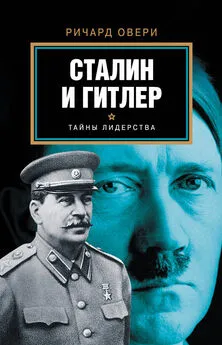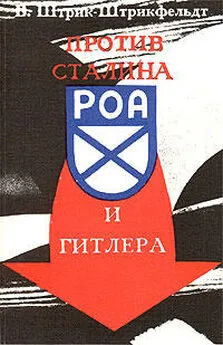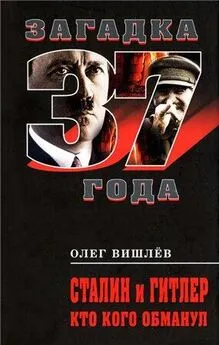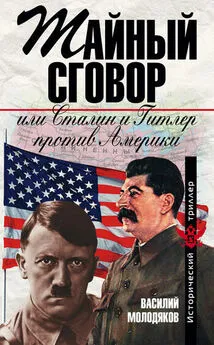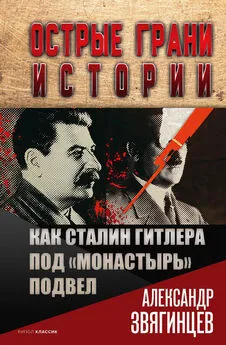Ричард Овери - Сталин и Гитлер
- Название:Сталин и Гитлер
- Автор:
- Жанр:
- Издательство:АСТ
- Год:2015
- Город:Москва
- ISBN:978-5-17-082961-3
- Рейтинг:
- Избранное:Добавить в избранное
-
Отзывы:
-
Ваша оценка:
Ричард Овери - Сталин и Гитлер краткое содержание
Что это были за личности?
Какими были методы их правления?
В чем мораль диктатуры как таковой и к чему она ведет?
На эти и другие наболевшие вопросы отвечает известный британский историк, автор крупных работ по истории Второй мировой войны Ричард Овери.
При сравнение и сопоставление двух режимов Овери рассматривает степень и характер народной поддержки, очаги противостояния и сопротивления, путь к власти каждого из диктаторов и процесс формирования культа личности и т. д.
Сталин и Гитлер - читать онлайн бесплатно полную версию (весь текст целиком)
Интервал:
Закладка:
128. Lewy, ‘Gypsies and Jews’, pp. 388–93.
129. B. D. Lutz and J. M. Lutz ‘Gypsies as victims of the Holocaust’, Holocaust and Genocide Studies, 9 (1995), p. 356.
130. Lewy, Persecution of the Gypsies, p. 43.
131. A. Elon The Pity of it All: a Portrait of Jews in Germany 1743–1933 (London, 2002), pp. 210, 378; O. Heilbronner ‘From Antisemitic Peripheries to Antisemitic Centres: The Place of Antisemitism in Modern German History’, Journal of Contemporary History, 35 (2000), pp. 560–75.
132. Elon, Pity of it All, p. 379; F. Nicosia The Third Reich and the Palestine Question (London, 1985), p. 212 for fi gures from 1932 onwards.
133. S. Haffner Defying Hitler: a memoir (London, 2002), pp. 121–2.
134. Bundesarchiv, Berlin R2501/6601, Reichsbank research department, ‘Bedenkliche wirtschaftliche Auswirkungen des Judenboykotts’, appendix, pp. 1–5.
135. V. Klemperer I Shall Bear Witness: the Diaries of Viktor Klemperer 1933–41 (London, 1998), p. 13.
136. S. Friedländer Nazi Germany and the Jews: the Years of Persecution 1933–1939 (London, 1997), pp. 27–9.
137. Friedländer, Nazi Germany and the Jews, p. 28; see too C. Koonz The Nazi Conscience (Cambridge, Mass., 2003), pp. 166–7.
138. H. Michaelis and E. Schraepler (eds) Ursachen und Folgen vom deutschen Zusammenbruch 1918 bis 1945 (Berlin, 1968), vol. xi, p. 605, Himler decree, 3 December 1938.
139. W. Benz (ed.) Die Juden in Deutschland 1933–1945: Leben unter nationalsozialistischer Herrschaft (Munich, 1988), p. 783.
140. Friedländer, Nazi Germany and the Jews, pp. 62–3; Nicosia, Third Reich and Palestine, pp. 41–9, 212; Benz, Juden in Deutschland, pp. 733, 738. Benz gives a fi gure of 168, 972 for May 1941 and 163, 696 for October that year.
141. Friedländer, Nazi Germany and the Jews, p. 177.
142. Friedländer, Nazi Germany and the Jews, pp. 242–6; B. F. Pauley Prom-Prejudice to Persecution: a History of Austrian Anti-Semitism (Chapel Hill, NC, 1992), pp. 284–97.
143. H. Mommsen Von Weimar nach Auschwitz. Zur Geschichte Deutschlands in der Weltkriegsepoche (Stuttgart, 1999), pp. 268–82.
144. Connelly, ‘Nazis and Slavs’, p. 33.
145. Maser, Hitler’s Letters and Notes, pp. 279–83; see too K.-U. Merz Das Schreckbild: Deutschland und der Bolschewismus 1917 bis 1921 (Frankfurt am Main, 1995), pp. 457–71 for Hitler’s view of the Jews in the early 1920s.
146. W. Treue ‘Hitlers Denkschrift zum Vier jahresplan 1936’, Vierteljahrshefte für Zeitgeschichte, 3 (1955) pp. 204–5.
147. National Archives II (College Park, MD) RG 238, Jackson papers, Box 3, translation of letter from Robert Ley to Dr Pfl ücker, 24 October 1945.
148. Friedländer, Nazi Germany and the Jews, pp. 3, 12.
149. National Archives, RG 238, Jackson papers, Box 3, Robert Ley to Dr Pfl ücker.
150. Hitler’s speech in M. Domarus Hitler’s Speeches and Proclamations 1939–1940 (Würzburg, 1997), pp. 1448–9, Hitler’s speech to the Reichstag, 30 January 1939; Himmler in Kroll, Utopie, pp. 213–16.
151. P. Longerich The Unwritten Order: Hitler’s Role in the Final Solution (Stroud, 2001), pp. 51–3.
152. Longerich, Unwritten Order, pp. 63–5; see the discussion of recent debates in M. Roseman ‘Recent Writing on the Holocaust’, Journal of Contemporary History, 36 (2001), pp. 361–72.
153. R. Breitman ‘Himmler and the “Terrible Secret” among the executioners’, Journal of Contemporary History, 26 (1991), pp. 436–7.
154. See for example W. Benz, K. Kwiet and J. Matthäus Einsatz im ‘Reichskommissariat Ostland’: Dokumente zum Völkermord im Baltikum und in Weissrussland 1941–1944 (Berlin, 1998) for a detailed documentation of the process of ghettoization and mass shootings. See too Aly, ‘Final Solution’, chs 3, 7 and 8 on ghettos and deportation.
155. T. Jersak ‘Die Interaktion von Kriegsverlauf und Judenvernichtung: ein Blick auf Hitlers Strategie im Spätsommer 1941’, Historisches Zeitschrift, 268 (1999), pp. 345–60.
156. P. Witt ‘Two Decisions Concerning the “Final Solution to the Jewish Question”: Deportation to Lodz and Mass Murder in Chelmno’, Holocaust and Genocide Studies, 9 (1995), p. 319; C. Gerlach ‘The Wannsee Conference, the Fate of the German Jews, and Hitler’s Decision in Principle to Exterminate All European Jews’, Journal of Modern History, 70 (1998), pp. 762–8.
157. Gerlach ‘Wannsee Conference’, pp. 784–5.
158. Gerlach, ‘Wannsee Conference’, pp. 807–8; for other views on the signifi cance of the meeting on 12 December see M. Moll ‘Steuerungsinstrument im “Ämterchaos”? Die Tagungen der Reichs-und Gauleiter der NSDAP’, Vierteljahrshefte für Zeitgeschichte, 49 (2001), pp. 240–43; see too U. Herbert (ed.) National Socialist Extermination Policies: Contemporary German Perspectives and Controversies (Oxford, 2000), pp. 38–41.
159. J. von Lang (ed.) Das Eichtnann-Protokoll: Tonbandaufzeichnungen der israelischen Verhörer (Berlin, 1982), pp. 69, 86.
160. M. Roseman The Villa, the Lake, the Meeting: Wannsee and the Final Solution (London, 2002), chs 3–4.
161. F. Genoud (ed.) The Testament of Adolf Hitler: the Hitler-Bormann Documents (London, 1961), pp. 51–2, entry for
13 February 1945.
162. Hitler, Mein Kampf, p. 403.
163. Weitz ‘Racial Polities’, p. 23.
164. Pohl, Ethnic Cleansing, pp. 2–3.
165. Breitman ‘Himmler and the “Terrible Secret”’, p. 234.
166. M. I. Koval The Nazi Genocide of the Jews and the Ukrainian Population 1941–1944’, in Gitelman, Bitter Legacy, pp. 52–3.
167. K. Slepyan The Soviet Partisan Movement and the Holocaust’, Holocaust and Genocide Studies, 14 (2000), pp. 2–6.
168. Z. Gitelman ‘Soviet Reactions to the Holocaust 1945–1991’, in L. Dobroszycki and J. Gurock (eds) The Holocaust in the Soviet Union: Studies and Sources on the Destruction of the Jews in Nazi-Occupied Territories of the USSR 1941–1945 (New York, 1993), pp. 3, 13–18.
Глава 14
1. V. Grossman Life and Fate (London, 1985), p. 23.
2. A. Kilian Einzuweisen zur völligen Isolierung NKWD-Speziallager Mühlberg/Elbe 1945–1948 (Leipzig, 1993), pp. 79 ff.
3. Kilian, NKWD-Speziallager Mühlberg/Elbe, p. 7.
4. N. Tumarkin The Living and the Dead: the Rise and Fall of the Cult of World War II in Russia (New York, 1994), pp. 113–15.
5. M. Jakobsen Origins of the Gulag: the Soviet Prison Camp System 1917–1934 (London, 1993), pp. 17–41.
6. Jakobsen, Origins of the Gulag, pp. 112–14; R. Stettner ‘Archipel GULag’: Stalins Zwangslager – Terrorinstrument und Wirtschaftsgigant (Paderborn, 1996), pp. 66–76; G. M. Ivanova Labor Camp Socialism: the Gulag in the Soviet Totalitarian System (New York, 2000), pp. 13–15. In 1921 there were approximately 50,000 prisoners in Cheka camps. See too A. Applebaum Gulag: a History of the Soviet Camps (London, 2003), chs 1–2.
7. Jakobsen, Origins of the Gulag, pp. 69, 91.
8. Jakobsen, Origins of the Gulag, pp. 125–6; J. Pohl The Stalinist Penal System (Jefferson, NC, 1997), p. 12.
9. U. Parvilahti Beria’s Gardens: Ten Years’ Captivity in Russia and Siberia (London, 1959), p. 94.
10. Jakobsen, Origins of the Gulag, pp. 119–21; Stettner, ‘Archipel GULag’, pp. 76–87; M. Flores and F. Gori (eds) GULag: il sistema dei lager in URSS (Milan, 1999), pp. 25–6.
11. Pohl, Stalinist Penal System, pp. 14–15; Ivanova, Labor Camp Socialism, pp. 23–5.
12. K. Drobisch and G. Wieland System der NS-Konzentrationslager 1933–1939 (Berlin, 1993), pp. 16–18.
13. Drobisch and Wieland, NS-Konzentrationslager, p. 16.
14. G. Schwarz Die nationalsozialistischen Lager (Frankfurt am Main, 1990), pp. 139–41, who counts 59 camps set up in 1933 and
1934; J. Tuchel ‘Dimensionen des Terrors: Funktionen der Konzentrationslager in Deutschland 1933–1945’, in D. Dahlmann and G. Hirschfeld (eds) Lager, Zwangsarbiet, Vertreibung und Deportation (Essen, 1999), pp. 374, 383; Drobisch and Wieland, NS-Konzentrationslager, pp. 73–5.
15. Eicke in J. Tuchel (ed.) Die Inspektion der Konzentrationslager 1938–1945: Eine Dokumentation (Berlin, 1994), pp. 36–7, ‘Disziplinar-und Strafordnung für das Gefangenenlager’, 1 August 1934; Drobisch and Wieland, NS-Konzentrationslager, pp. 98–9; W. Sofsky The Order of Terror: The Concentration Camp (Princeton, NJ, 1997), pp. 31–2. On Eicke see C. W. Sydnor Soldiers of Destruction: The SS Death’s Head Division, 1933–1945 (Princeton, NJ, 1977), pp. 3–13.
16. Tuchel, Inspektion der Konzentrationslager, p. 34; Sofsky, Order of Terror, pp. 30–31.
17. Tuchel, Inspektion der Konzentrationslager, p. 40; Drobisch and Wieland, NS-Konzentrationslager, pp. 186–91; Tuchel, ‘Dimensionen des Terrors’, p. 379.
18. F. Pingel Häftlinge unter SS-Herrseh aft: Widerstand, Selbstbehauptung und Vernichtung im Konzentrationslager (Hamburg, 1978), pp. 39–40.
19. Pingel, Häftlinge unter SS-Herrschaft, p. 62.
20. H. Kaienberg ‘Vernichtung durch Arbeit’: Der Fall Neuengamme (Bonn, 1990), p. 335 Pingel, Häftlinge unter SS-Herrsch aft, pp. 61–2; K. Orth Das System der nationalsozialistischen Konzentrationslager: Eine politische Organisationsgeschichte (Hamburg, 1999), p. 32.
21. H. Kaienberg Konzentrationslager und deutsche Wirtschaft 1939–1945 (Opladen, 1996), pp. 24–5; Pingel, Häftlinge unter SS-Herrschaft, p. 62.
22. Kaienberg, Konzentrationslager, p. 26.
23. Pingel, Häftlinge unter SS-Herrschaft, pp. 61–2.
24. Orth, Das System der Konzentrationslager, pp. 47–51; on SS economic activities see J. E. Schulte Zwangsarbeit und Vernichtung: Das Wirtschaftsimperium der SS (Paderborn, 2001).
25. W. Kirstein Das Konzentrationslager als Institution totalen Terrors: Das Beispiel des Konzentrationslager Natzweiler (Pfaffenweiler, 1992), pp. 1–33.
26. H. Kaienberg ‘KZ-Haft und Wirtschaftsinteresse: Das Wirtschaftsverwal-tungshauptamt der SS als Leistungszentrale der Konzentrationslager und der SS-Wirtschaft’, in Kaienberg, Konzentrationslager, p. 51.
27. Kirstein, Konzentrationslager Natzweiler, p. 8. The remark was overheard by Rudolf Höss, the future commandant of Auschwitz, who personally killed the fi rst victim of accusations of sabotage, a Junkers aircraft worker who refused to comply with air-raid drill.
28. F. Karay Death Comes in Yellow: Skarzysko-Kamienna Slave Labor Camp (Amsterdam, 1996), pp. 235–46.
29. Schwarz, nationalsozialistischen Lager, p. 86.
30. G. Lotfi KZ der Gestapo: Arbeitserziehungslager im Dritten Reich (Stuttgart, 2000), pp. 114–28, 440–41; Schwarz, nationalsozialistischen Lager, pp. 82–3.
31. R. Kubatzki Zwangsarbeiter-und Kriegsgefangenenlager: Standorte und Topographie in Berlin und im brandenburgischen Umland 1939 bis 194s (Berlin, 2000), p. 250 (the total was 1,175 camps); J. Schiey Nachbar Buchenwald: Die Stadt Weimar und ihr Konzentrationslager 1937–1945 (Cologne, 1999), pp. 139–44.
32. Pingel, Häftlinge unter SS-Herrschaft, pp. 120–21; D. Dwork and R. J. van Pelt Auschwitz: izyo to the Present (New York, 1996), pp. 202–7, 261–3; G. Aly and S. Heim Architects of Annihilation: Auschwitz and the Logic of Destruction (London, 2002), pp. 106–12.
33. Pingel, Häftlinge unter SS-Herrschaft, p. 230; Dwork and van Pelt, Auschwitz, p. 272.
34. E. Kogon, H. Langbein and A. Rückerl (eds) Nazi Mass Murder: a Documentary History of the Use of Poison Gas (New Haven, Conn., 1993), pp. 145–6.
35. Dwork and van Pelt, Auschwitz, p. 299.
36. Schwarz, nationalsozialistischen Lager, p. 211.
Читать дальшеИнтервал:
Закладка:
